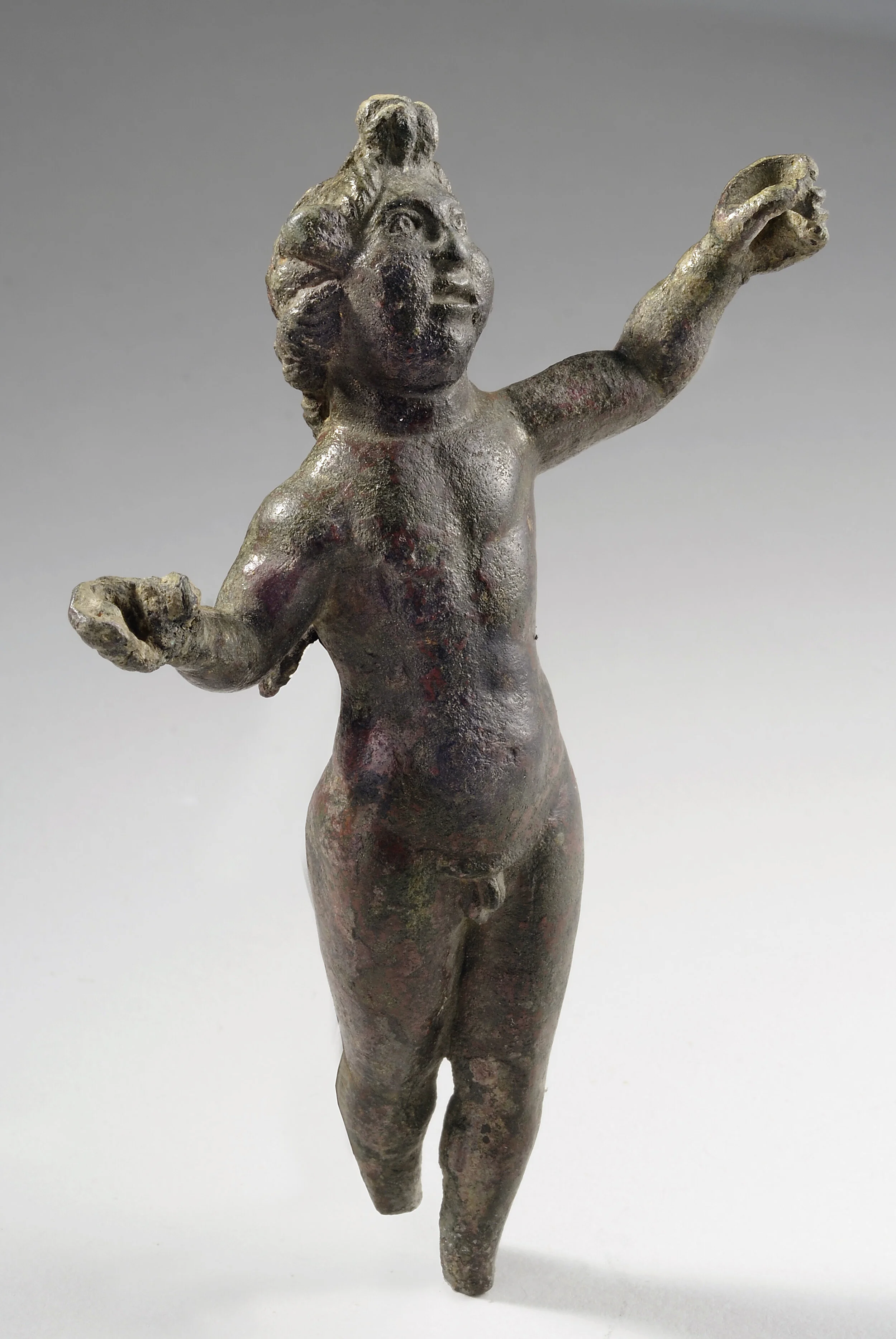Ancient Roman Bronze Left Hand





Ancient Roman Bronze Left Hand
Roman, ca. 1st century A.D.
Bronze
L: 21.5 cm
Serial: 6091
Provenance: Acquired on the UK art market, 1996
This bronze left hand made a part of a monumental statue. It is hollow; the casting involved the lost-wax technique. The hand is rendered naturalistically and was modeled directly from life. The fingers are clasped into a loose fist, as if they once held an object, a spear, staff, or reins; this suggests that the statue represented a man. It shows the musculature, the plump and fleshy palm, the shape of the bending phalanxes, and the fingernails which were carefully incised. In some bronze statues the fingernails have been inlaid with sheet of silver. As only one hand remains, it is impossible to say whom the large bronze sculpture once represented. However, because of its size and the fact that it was cast in bronze, it is certain that the individual was an important figure, either divine or mortal. Although only few large bronze statues survive, they were extremely popular in antiquity. In fact, the greatest works of Greek sculpture were originally cast in bronze, today they are known through many survived Roman copies in marble. Because bronze was so valuable, these works of art were often melted down, so that the metal could be reused for other purposes.
CONDITION: Surface covered with oxides; there are two small holes on the palm for the attachment of an object held by the hand.
BIBLIOGRAPY
MATTUSCH C. C., The Fire of Hephaistos, Large Classical Bronzes from North American Collections, Cambridge, Massachusetts, 1996, pp. 205-209, nos. 10-15.







